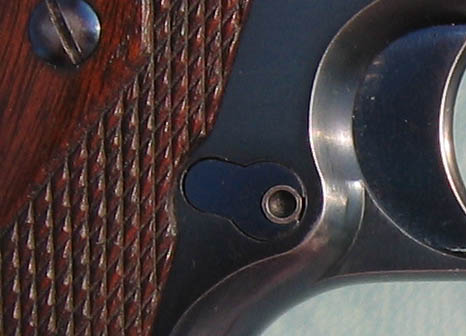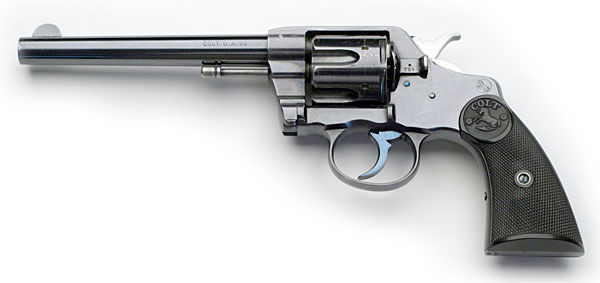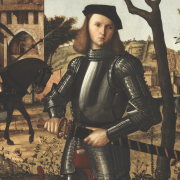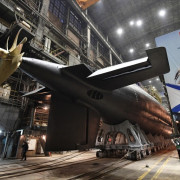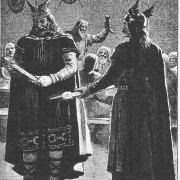Colt single action army
Содержание:
- The DAO – A Step Backward
- Engraving
- Навигация
- Post-Apocalypse
- Описание [ править ]
- В массовой культуре
- Внешние ссылки
- История
- Патенты и усовершенствование револьвера
- Colt Paterson
- Legacy
- External links
- Каталог вооружения
- Trade Policy Review Body
- Operation
- Описание
- Final Verdict
- The Colt Single Action Army in the U.S. Army
- история
- Пистолет Глок 21
- Ассортимент
- Единица измерения толщины озонового слоя
The DAO – A Step Backward
The DAO semi-automatic evolved as the result of a requirement on the part of various agencies to have a sidearm with the magazine capacity of the auto-loader, coupled with the simplicity of operation of the DA revolver. Like the DA revolver, the DAO has no external safety. A passive firing pin block may be part of the design. In the DAO auto-loader, the cycling slide places the exposed hammer on a “quarter-cock” position, or lifted just far enough to allow the firing pin to retract under the pressure of the return spring. All shots are fired from this position. There is only one type of trigger action to learn. No safety needs to be manipulated. If the finger is off the trigger, the gun is safe. Each trigger pull is fairly long and heavier than a single action pull. If this works for you, great. Personally, I do not care for it. The SIG 239 DAK and the H&K USP Variation 7 offer this type of operation. Some agencies feel that the DAO is a “safer” firearm than the SA or DA/SA auto-loader, but this is debatable. There is also a belief that training is simplified, which makes sense, because only one trigger action needs to be learned and practiced.
Engraving
Colt engraved less than one percent of its first generation production of the Single Action Army revolver, which makes these engraved models extremely rare and valuable with collectors. Engraved pieces were often ordered by or for famous people of the day, including lawmen, heads of state, and captains of industry. This tradition began with the founder, Sam Colt, who regularly gave such examples away as a means of publicity for Colt.
Colt employed a number of highly skilled engravers, many of whom were highly-trained artisans who immigrated to America from Europe. These artisans were also known for inlaying gold, silver, and precious stones in their work. Many of these engraved pieces were adorned with stocks made of ivory or pearl with engraving and inlays too.
Навигация
Post-Apocalypse
Fear the Walking Dead
Even after the outbreak began, John Dorie refused to take his guns out of a lockbox where he kept them at his cabin, instead preferring to use melee weapons to defend himself against walkers even when it put his life into danger. Only when June’s life fell into danger from a small herd and he couldn’t get to her in time did John pull his guns out to quickly kill the remaining walkers. John subsequently gave one of his guns to June who kept it with her when she left the cabin, storing it in her backpack during her time at the Dell Diamond Baseball Stadium rather than actually utilizing the weapon.
When John took off after June, he once again carried his remaining gun, utilizing it against both walkers and hostile survivors although John attempted to not actually kill anyone living. The gun was briefly stolen by Hardy during a confrontation in the Trailer Park who threatened Morgan Jones with it. Morgan knocked the gun from Hardy’s hand with his staff and John recovered it and used the gun to kill one of Leland’s men on a nearby rooftop. As John helped Alicia Clark, Victor Strand and Luciana Galvez load their weapons and supplies into Al’s SWAT van, he discovered June’s backpack with his gun still inside of it which had been recovered by the group when the stadium fell. To his grief, John was informed by the group of the apparent death of June whom they knew as Naomi.
After killing Marcus with a rifle, John used one of his revolvers to prevent the man from reanimating. Shortly thereafter, while fighting off a herd on the Route 185 Bridge, John lent one of his guns to Dakota for self-defense. Dakota used it to kill a walker that was overpowering John, saving his life. However, after John discovered her murder of Cameron, Dakota threatened John and ultimately shot him in the chest with his own gun before pushing John off of the bridge, killing him. When Dakota attempted to threaten Morgan, he knocked the weapon out of her hand with his battle axe.
After putting down a zombified John, June found his second gun still on John’s body while burying him. June contemplated using it to kill Virginia, but Hill took the gun from her, aware of June’s intentions. It is unknown if Hill kept possession of the weapon or if it was returned to Morgan’s Group following the defeat of Virginia and the surrender of Hill at which point the weapon may have fallen into the hands of Victor Strand who would possibly have returned it.
Morgan recovered the weapon that Dakota had used to kill John and gave it to June who started wearing it as well as John’s hat. Blaming Virginia for her husband’s murder, June used the same gun that Dakota had killed John with to execute Virginia — Dakota’s mother and to June the reason for John’s death — in revenge.
Описание [ править ]
В массовой культуре
Внешние ссылки
История
Выпуск этой модели последовал с небольшим перерывом за револьвером Open Top Rimfire Model 1872 (Модель 1872 года с открытой рамкой). Она была представлена армии в конце 1871 года, а после всесторонних и тщательных испытаний, была принята на вооружение под названием Model 1873. Конструкция оружия была продумана и освобождена от недостатков, сочетая в себе черты всех предыдущих револьверов Colt. Устройство ударно-спускового механизма переняло некоторые особенности капсульных револьверов, включающее в себя усовершенствования, выполненные по требованию армии, а также учитывая особенности применения унитарных патронов с металлической гильзой. Так, был оставлен шомпол, он располагался под стволом и если в капсульных револьверах он предназначался для утрамбовки пуль, то теперь имел иную функцию — удаление стрелянных гильз, отсюда и название шомпол-выбрасыватель. Выпуск Colt SAA начался в 1873 году и продолжался до 1940 года. Всего было выпущено 357 859 экземпляров. В годы Второй мировой войны было собрано несколько десятков револьверов из имеющихся тогда деталей, а после этого последовал перерыв, который длился около десяти лет. И в 1955 году Colt снова возобновляет производство легендарного револьвера. Хоть этот револьвер был разработан специально для армии, он обрел популярность на Диком Западе среди ковбоев.
Возможно, это единственное огнестрельное оружие, которое выпускалось в течение длительного периода. Каждый новый коммерческий выпуск только увеличивал спрос на оружие. Этому револьверу подражали многие производители оружия, повторяли дизайн оружия во многих странах мира. Например, револьверы Ruger Single-Six, Ruger Vaquero и Ruger Blackhawk фирмы Sturm, Ruger & Co., и револьвер Beretta Stampede компании Beretta. Модное увлечение соревнованием по скоростному выхватыванию оружия с последующим выстрелом в 1950-х года повышало интерес на револьверы одинарного действия, выполненные в стиле western (см. ковбойская стрельба).
Патенты и усовершенствование револьвера
Механизм револьвера Кольта, скорее является реновацией, нежели изобретением, поскольку, был просто улучшен вращающийся кремневый замок (спусковой механизм, который используется в ружьях и винтовках), уже запатентованный изобретателем Э. Кольером. Британский патент на механизм Кольта был зарегистрирован в 1835 году, а в 1836 году американский изобретатель получил патент США на его пистолет с вращающимся барабаном.
Первоначально, зарядка револьвера Кольта была сложна и заключалась в частичной разборке пистолета и снятии барабана специальным инструментом. Стреляющие носили с собой запасные барабаны и просто меняли их при необходимости продолжать боевые действия. Позже, на Кольте стали устанавливать рычаг для прессовки, а затем усовершенствовали настолько, что стали заряжать оружие без съема барабана.
Кольт продолжал совершенствовать свою первоначальную конструкцию, получая патенты на такие компоненты, как механизм цилиндрового замка, рифленые цилиндры, более длинные ручки и скошенные цилиндры, чтобы ликвидировать воспламенение соседних камер.
Colt Paterson
В конце 1836 года на фабрике Colt’s Patent Firearms Manufacturing Company в городе Патерсон, штат Нью-Джерси, началось производство капсюльных револьверов Кольта — тогда еще пятизарядных, калибра .28, продаваемых под названием Colt Paterson. Всего до 1842 года было выпущено 1 450 револьверных ружей и карабинов, 462 револьверных дробовика и 2 350 собственно револьверов. Естественно, все оружие было капсюльное. Первые образцы отличались малой надежностью, регулярными поломками и весьма несовершенной конструкцией, не говоря уже о крайне небезопасном и неудобном процессе перезаряжания. Неудивительно, что правительство США не проявило особого интереса к новому оружию. Армия приобрела лишь несколько револьверных карабинов для испытаний. Самым большим заказчиком для компании Кольта стала Республика Техас, купившая 180 револьверных дробовиков и ружей для рейнджеров, и примерно такое же количество револьверов для военно-морского флота Техаса. Некоторое количество револьверов (более мощного калибра — .36) заказали на свои деньги сами техасские рейнджеры, в частном порядке. Низкий спрос в 1842 году привел к банкротству фабрики.
Colt Paterson выпуска 1836-1838 годов (еще без рычага-шомпола для заряжания)
Таким образом, самой массовой из производимых в Патерсоне моделей револьверов Colt Paterson стал №5 Holster, он же Texas Paterson — револьвер калибра .36. Их было выпущено около 1 000 единиц. Из них половина — в период с 1842 по 1847 года, уже после банкротства. Их производство наладил кредитор и бывший компаньон Кольта Джон Эхлерс.
Colt Paterson выпуска 1836-1838 годов с убранным в корпус спусковым крючком
Одним из самых значительных конфликтов с применением револьверов Colt Paterson стало сражение на перевале Бандер между мексиканской армией и рейнджерами Техаса, среди которых был капитан армии США Сэмюель Уокер. Позже, в ходе Американо-мексиканской войны, Уокер познакомился с Кольтом и вместе с ним модифицировал револьвер Colt Paterson, получивший название Colt Walker. На него был неплохой спрос, так как Colt Walker был куда более надежным и удобным, чем предшественник. Благодаря этому Кольт вернулся к разработке оружия в 1847 году.
Legacy
The Single Action Army is still being manufactured today, although antique Peacemakers are obviously rare and highly regarded as collectors items. The gun is perhaps most widely associated with the wild west and spaghetti westerns, although many films and cultural shows still use this.
All original, good condition first generation Single Action Armys, those produced between 1873 and 1941, are among the most valuable to the collector. Especially valuable, often going for well over $10,000, are the OWA and the Nettleton Single Action Army Colts.
The OWA Colt refers to the earliest issued Single Action Army guns which were inspected by Orville W. Ainsworth. Ainsworth was the ordnance sub-inspector at the Colt factory for the first 13 months (Oct. 1873 to Nov. 1874) of the Single Action Army’s production. It was Ainsworth who inspected the Colts used by Col. G.A. Custer’s 7th Cavalry at the Little Bighorn, oddly Custer himself never carried a peacemaker on the day of the battle, instead he carried a pair of English built Bull dog revolvers.
Henry Nettleton was the ordinance inspector in 1878 at the Springfield Armory. Second only to the OWA Colts, Nettleton Colts are prized by serious collectors. Both the Nettleton and OWA Colts have the cartouche (OWA or HN) on the left side of the wood grip.
Another historical military SAA revolver is the Artillery Model. It was issued to the rear-echelon troops, artillerymen, and such during the Spanish-American war period. Following the Indian wars, in 1895, the cavalry SAAs had fallen into disrepair and had been sent back to the Colt factory or Springfield Armory to be refurbished, fit with a shorter barrel, (from a 7 1/2 in (191mm) to a 5 1/2 in (140mm) barrel) and re-issued. The standard military revolver at the time was the Colt double action New Army revolver chambered in 38 Colt. Theodore Roosevelt’s Rough Riders charged up San Juan hill wielding the Artillery Model. Artillery models can usually be identified by the original inspector’s cartouche (such as the OWA or HN) on the left side of the grips and the cartouche of Rinaldo A. Carr (RAC), the inspector who inspected the refurbished guns, on the right side.
The Single Action Army has been copied by numerous makers both in America and in Europe. The two major makers of Colt replicas are Aldo Uberti in Italy, which is a property of Beretta, and United States Firearms Mfg. Co. in Hartford Connecticut. Both companies make superb replicas that are much more affordable than the real Colt.
A number of «near clones» of the Colt SAA have appeared which mimic the size and feel of the SAA while offering a modern transfer bar ignition system similar to modern Double Action (DA) revolvers. Unlike the SAA and «true clones», these can be carried with all six rounds loaded versus «five up carry and hammer on the empty cylinder». After Beretta bought Uberti they ordered a high-end SAA near-clone with a transfer bar known as the Beretta Stampede. The other two transfer bar SAA near-clones are the Ruger «New Vaquero» and the Taurus Gaucho. These three are much safer for the newbie «cowboy shooter» while being close enough to SAA ergonomics to fit in the same holsters. The Ruger «Original Vaquero» looks a lot like the SAA but is built on a bigger frame able to take the .44 Magnum and is not considered an «SAA clone» like the «New Vaquero».
General Patton carried an ivory handled Colt peacemaker which he used in the Mexican Punitive Expedition of 1916 as well as carrying one during the second world war.
Famed British adventurer and soldier T.E. Lawrence («of Arabia») had a special fondness for this weapon, because it saved his life during one of his pre-World War I trips to Mesopotamia; he was jumped by an Arab bandit who stole the gun and tried to kill Lawrence, but Lawrence’s assailant couldn’t because he did not understand the revolver mechanism. Lawrence thereafter always carried one of these weapons for good luck..
External links
Каталог вооружения
Trade Policy Review Body
Operation
The term Single action refers to the behavior of the trigger. Its hammer must be cocked manually before each shot, and the trigger performs only a single action, releasing the hammer. Most modern revolvers are «double action,» as pulling the trigger will both cock and release the hammer.
Colt SAA
Like many other contemporary revolvers, the cylinder of the Single Action Army can hold 6 rounds. However, because there is no mechanism which prevents a round from discharging a loaded chamber if the hammer is struck forcibly, five rounds are usually loaded. Although many modern reproductions, such as those made by Beretta, utilize a transfer-bar safety which prevents such an accidental discharge, many people still choose to load only 5 cartridges for the sake of historical accuracy. In the popular sport of cowboy action shooting, even if one has a modern revolver, like the Ruger Vaquero, with the transfer bar safety (in which it is perfectly safe to load and carry six in the cylinder), they are only allowed to load five and keep the hammer on an empty chamber.
The common loading method is to load 1, miss 1, then load the rest. This causes the empty chamber to be under the hammer. When the hammer is cocked, it will rotate the chamber to one with a round inside. Furthermore, as the swing-out cylinder had yet to be invented, Colt Peacemakers are loaded by opening a loading gate on the right side of the gun, behind the cylinder. Each round is loaded individually as the user turns the cylinder and ejects the casing with the built-in ejection rod attached below the barrel. Colt’s cartridge powerful, and because the Colt revolver tended to be a more sturdy gun because of its solid frame, the Colt was the final choice for the U.S. Army and, therefore, for any peace officer or civilian who could afford one.
The loading gate for rounds was on the right side as a nod to use on horseback. The user was supposed to hold both the reins and gun in the left hand and insert rounds with the right.
Описание
Несмотря на свою популярность это был простой, но в то же время мощный и тяжёлый револьвер, представляющий собой сочетание конструкции прежних капсюльных револьверов Кольта — ударно-спусковой механизм, дизайн и конструкция рукоятки и частично курка, с более современной монолитной замкнутой рамкой и использованием унитарных патронов центрального боя.
Перезарядка револьвера Colt SAA
Такое техническое решение (удачное в технологическом плане, но не очень удачное конструктивно) видимо было применено с целью использования для производства оружия того же заводского оборудования и оснастки, которое использовалась и для производства капсюльных моделей револьверов. На нижней поверхности цельной рамки, плавно перетекающей к рукоятке, располагается небольшая, плоская предохранительная скоба. Форма рукоятки оружия расширяется книзу, что делает её более эргономичной. Она достаточно низко посажена на рамку, за счет чего линия прицеливания выше держащей оружие руки.
Барабан заряжался, как правило, не полностью, а максимум пятью патронами, то есть одна камора, напротив ствола, должна была оставаться пустой, дабы избежать случайного выстрела. Так как это был револьвер с цельной рамкой, перезаряжание производилось через откидываемую вбок дверцу с правой стороны , — и так по одному патрону, но перед этим курок ставился на полувзвод, чтобы открылась сама дверца. Крупный курок, в котором крепился штифтом боёк, в спущенном положении почти полностью, за исключением спицы, скрывался в куполообразном щитке рамки. Изогнутый под большой палец удлинённый хвостовик был покрыт глубокой насечкой. К дульной части цилиндрического ствола, который крепился на резьбе в рамке, была припаяна полукруглая мушка. С правой стороны под стволом крепился пенал эжектора, в котором монтировался пружинный шомпол-выбрасыватель с кнопкой, имеющей вид шайбы, которую вскоре уменьшили, придав форму полумесяца.
Внутреннее устройство
| cylinder with ratchet — барабан с храповиком | hammer with hand — курок со спицей (с роликом) | |
| base pin — ось барабана | main spring — боевая пружина | |
| base pin bushing — подвижная трубка | cylinder locking bolt — стопор барабана | |
| ejector tube — пенал выбрасывателя | trigger — спусковой крючок | |
| ejector with spring — выбрасыватель с пружиной | trigger/bolt spring — пружина спускового крючка/стопора |
Final Verdict
There’s no definitive winner to the single action vs. double action revolvers standoff, as it all boils down to personal preference at the end of the day. If you’re looking for a revolver that automatically cocks the bullet on pulling the trigger, consider the double action options.
On the other hand, if the double action revolvers’ trigger resistance is too much for your taste, you’ll enjoy your experience with the single action variants. They’re known for their triggers’ responsiveness and smoothness. That’s why we see single action revolvers finding their way in fast-paced sports like mounted shooting.
No matter what budget you’re working with, you can find just the right single action revolver to cover your needs. Whether you’re looking for a compact revolver to use as your concealed carry gun or a powerful sidearm for hunting, the single action revolvers’ catalog has it all.
The Colt Single Action Army in the U.S. Army
Colt Single Action Army, serial No 5773 7th Cavalry issued
All original, good condition, U.S. Cavalry and Artillery Single Action Armies (those produced between 1873 and 1891) are among the most valuable to the collector. Especially valuable, often going for well over $10,000, are the OWA (Orville Wood Ainsworth) and the rare Henry Nettleton inspected Single Action Army Colts. The OWA Colt refers to the earliest issued Single Action Army guns which were inspected by Orville W. Ainsworth. Ainsworth was the ordnance sub-inspector at the Colt factory for the first 13 months (Oct. 1873 to Nov. 1874) of the Single Action Army’s production. It was Ainsworth who inspected the Colts used by Col. G.A. Custer’s 7th Cavalry at the Battle of the Little Bighorn. The number range of possible Little Bighorn Colts is 4500 — 7527.
Henry Nettleton was the U.S. Principal Sub-inspector in 1878 at the Springfield Armory. Second only to the OWA Colts, Nettleton Colts are prized by serious collectors. Both the Nettleton and OWA Colts have the cartouche (OWA or HN) on the left side of the wood grip.
By the mid 1870s, the Army had purchased a significant number of Smith and Wesson Schofield revolvers chambering a shorter .45 round. Logistical problems arose because the ammunition was not interchangeable. The Colt revolvers would accept the shorter round but not vice versa. For a time, the Government stopped orders for the longer Colt cartridge and used the Smith and Wesson round exclusively. The S & W Schofield was soon retired and sold to the civil market.
The largest group of U.S.Colt Cavalry revolvers was inspected by David F. Clark, his D.F.C. cartouche will be encountered on revolvers inspected from 1880 to 1887.
During the year 1893, the .45 U.S. Colt Single Action Army revolvers were retired by the Cavalry and replaced by the .38 caliber Colt Model 1892 Double Action Army revolver. The .45 Single Action Army revolvers were still standard issue to the Infantry, Artillery and other branches of the U.S. Army. In 1895-96, the Government returned 2000 SAA revolvers to Colt’s to be refurbished; 800 were issued to the New York Militia with the 7 ½” barrel and 1200 were altered to a barrel length of 5½». In 1898, 14 900 of the SAA revolvers were altered the same way by the Springfield Armory. The original records of the War Department do refer to these revolvers with the shortened barrel as the “Altered Revolver”. The name “Artillery” is actually a misnomer, maybe because the Light Artillery happened to be the first units to be armed with the altered revolver.
Colt Model 1873, U.S. Artillery Model
The Artillery Single Actions were issued to the Infantry, the Light Artillery, the Volunteer Cavalry and other troops because the standard issue .38 caliber Colt M 1892 double-action revolver was lacking stopping-power. For that reason, the .45 Artillery SAA Revolvers were used successfully by front troops in the Spanish-American War and the Philippine-American War. Theodore Roosevelt’s Rough Riders charged up San Juan Hill wielding the .45 caliber Artillery Model.
The Artillery Model usually had mixed numbers. It can be identified by the U.S. on the frame, the inspector’s stamps on different parts (such as a tiny A for Orville W. Ainsworth, DFC, HN, RAC for later inspectors and K for replacement parts) and the cartouche of Rinaldo A. Carr (RAC), the inspector who inspected the refurbished guns, on the grip.
история
Роллин Уайт , сотрудник Colt, запатентовал механизм заряжания револьвера. Патентная модель имела барабан с цилиндрической расточкой. Поскольку Кольт не проявил интереса, Уайт продал патент, действовавший с 3 апреля 1855 года в течение 14 лет, Горацию Смиту и Дэниелу Б. Вессону. Они выпустили Smith & Wesson No 1 на рынок еще в 1857 году . Они также предоставили компании Remington лицензию на производство револьверных барабанов с пробивкой для восстановления их ударных револьверов . Другие производители оружия, включая Colt, пытались обойти этот патент, но безуспешно. Только вето на президент Грант на продление срока действия патента расчистили путь для развития современного казенной части погрузочного револьвера в 1869th апреля
Чтобы оставаться конкурентоспособными на рынке и сократить складские запасы, Colt сначала выпустила перкуссионные револьверы Colt , Colt Conversion Revolvers , которые были переоборудованы для установки с задней загрузкой . В то же время компания разработала револьвер Colt Open Top калибра .44 Henry для армейских испытаний. Поскольку это не соответствовало требованиям армии США , главному инженеру Colt Уильяму Мэйсону было поручено разработать револьвер с закрытой рамой для тогдашнего армейского патрона .44 S&W American.
Часто встречающееся мнение, что Кольт скопировал закрытую рамку с Ремингтона, ошибочно, поскольку револьверы Кольта с закрытой рамой были доступны уже в 1855 году, а в 1860 году были также экспериментальные модели .44 Rimfire.
Надпись на стволе на Colt Single Action
Весной 1872 года был завершен прототип армейского револьвера Colt Single Action. На раме это было обозначено 44 NM 1872. В июне 1872 года последовал номер S 1, а в ноябре номер S 2 был доставлен в ответственные службы армии США в качестве первого испытательного оружия, за которым последовали еще 36 единиц раннего серийного производства. . (NM означает новую модель и S означает образец, немецкий язык: Muster). Это оружие, созданное для армейских испытаний, было сделано для американского армейского патрона .44 S&W в то время и было нацелено на дистанцию 50 ярдов . В забегах было семь ходов с прогрессивным левым поворотом. Они прошли все армейские испытания и превзошли Smith & Wesson № 3 . Поскольку характеристики боеприпасов .44 S&W были неудовлетворительными, Кольту было поручено предложить более мощный патрон, что привело к патрону .45 Long Colt, разработанному Франкфордским арсеналом . Стволы соответствующего калибра имели 6 звеньев с постоянной левой закруткой. По требованию армии доставленное оружие было расстреляно с 25 ярдов.
Серийное производство Colt Single Action Army началось 1 марта 1873 года с номера 1 и закончилось в 1941 году с номером 357 859, причем последние около 800 револьверов были поставлены после Второй мировой войны. Внутреннее заводское название револьвера Colt Single Action Revolver было первоначально Strap Pistol, позже Model P. Буквы на стволе были скатаны курсивом до 1875 года (примерно до серийного номера 21 000), а затем вертикальными печатными буквами.
Поскольку оружие отличалось простотой использования и надежностью, вскоре оно имело успех и на гражданском рынке. На Диком Западе гражданские версии также стреляли патронами винтовки Винчестера с 1877 года . В ковбоях только должны были нести один тип патрона с ними для двух видов оружия. Успех Peacemaker был очевиден по данным продаж: довоенный объем производства превысил 350 000 единиц. Производство было остановлено в 1941 году и возобновлено в 1956 году в ответ на различные запросы.
Его популярность привела к появлению таких прозвищ, как Peacemaker (миротворец), Equalizer (уравнитель) и Widowmaker (создатель вдов).
Пистолет Глок 21
Ассортимент
Разнообразие продукции существенно влияет на объемы сбыта. Сэмюэль понял это раньше многих других производителей промышленной продукции. Каждый из секторов потребительского рынка предъявлял свои требования. Военным Техаса нужна была огневая мощь, и они ее получали в виде модели Colt Walker, валящей на скаку лошадей благодаря длинному стволу и высокой начальной скорости пули. Создан «Уокер» в соавторстве с командиром рейнджеров, в честь которого и получил свое название. Однако большое и тяжелое оружие (вес – 2,5 кг) не совсем подходило для полиции, и в 1863 году американские шерифы смогли оценить Pocket Police, компактный, но тоже обладавший немалой мощью. Создан он на основе Dragoon (1847) и Pocket (1849) – двух предыдущих моделей, разработанных для легкой кавалерии и гражданских лиц. Длина ствола, вес и калибр револьвера «Кольт» менялись в зависимости от того, что требовалось в большей степени на том или ином рыночном сегменте.
